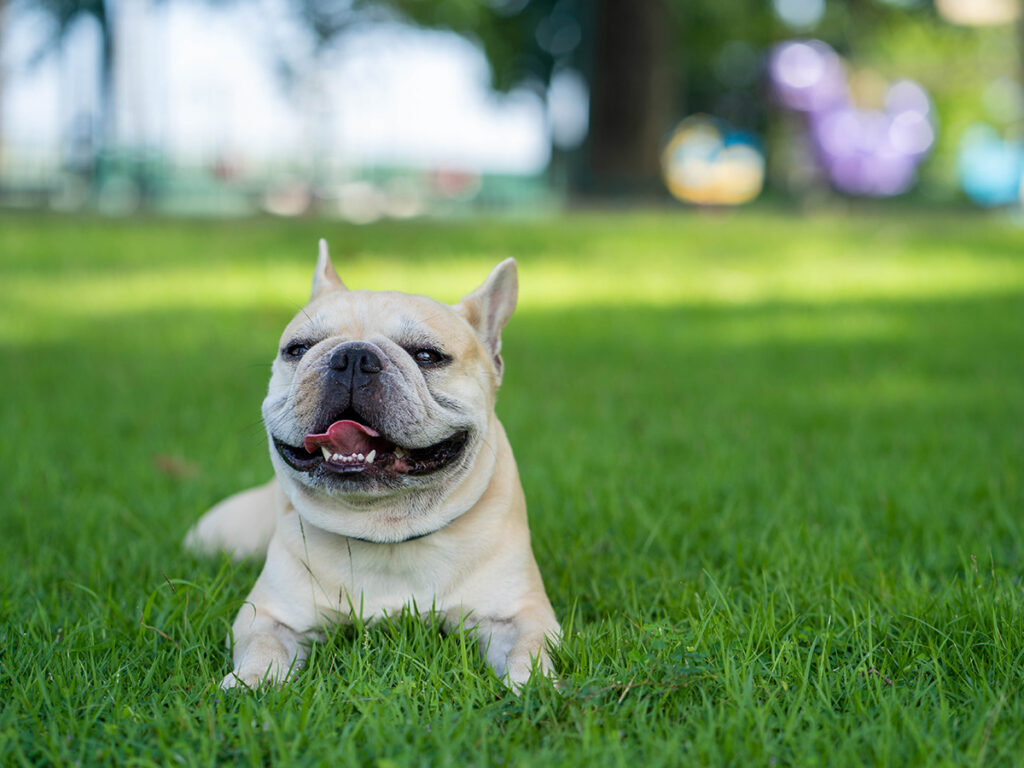Is there anything more exciting than seeing your dog running happily across the lawn?
Choosing high-quality grass for your backyard will make your dog happier and eager to spend time in the garden.
Also, a beautiful green lawn may give your home that extra something that can make it stand out and look like it came straight out of a fairytale!
However, all the running your dog does can quickly wear out that same lawn, and it will look much less impressive in no time.
So, what is the best grass for dogs?
After reading this post, we promise you will be able to choose the right grass type for your home that will last you a long time.
Let’s see what we have prepared for you!
Table of Contents
Factors That Could Affect Lawn Life
We know that dogs differ from each other in many characteristics that affect their nature.
These differences should lead you to analyze your dog’s habits well, making it easier to choose the right type for your home.
As you are aware, most types of grass are generally prone to wear.
The most common factors that cause lawn damage are:
- intense physical activity;
- your dog’s physiological needs;
- the dog’s size and weight.
Pay attention to all three factors. If you miss taking into account even just one of them, the chances of choosing the right grass diminish greatly.
Let’s go over each factor carefully:
Factor #1 – Your Dog’s Level of Physical Activity
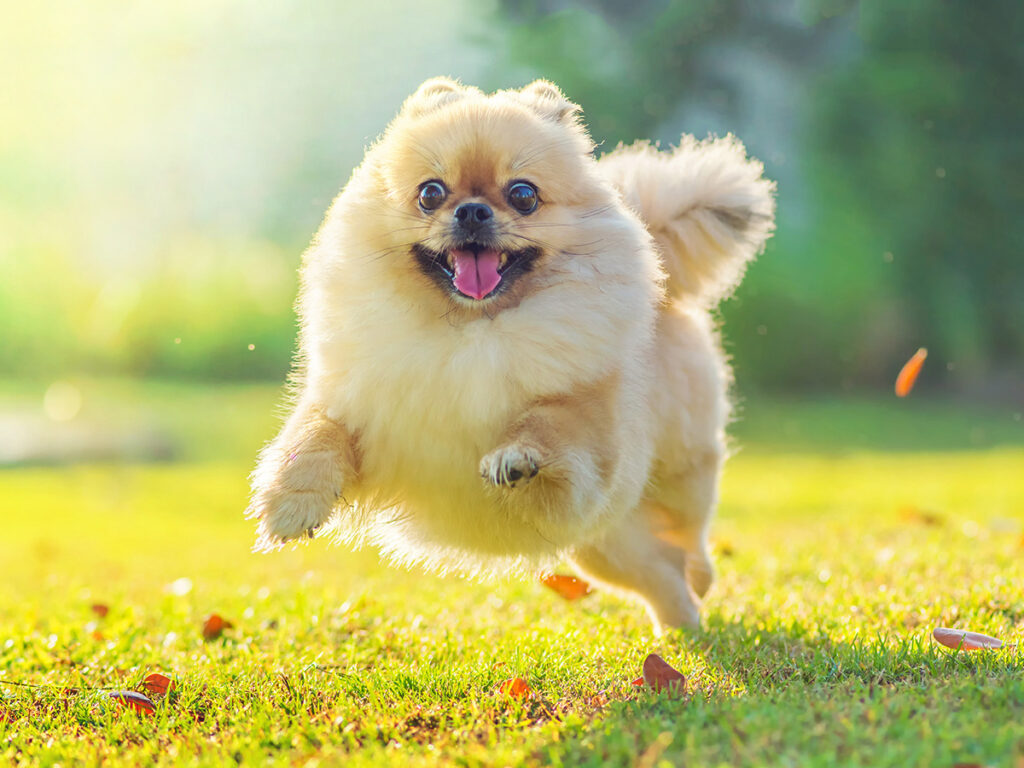

Regardless of whether we are discussing small or large dogs, they all require physical activity. In addition, the curious nature of dogs often leads them to look for some life-changing answers in the garden.
Once you present your dog with an area filled with grass, the chances are they will spend most of their time in it!
Running
While running across the lawn, your dog will slowly but surely destroy the grass composition by grabbing its vital parts with its paws. All the running could cause increased grass deterioration, and you may notice holes appearing. These can significantly shorten the life of your beautiful lawn.
Digging
We are also aware of how much dogs love to dig!
Digging can be a fatal habit when it comes to the survival of your grass. It is an innate instinct of a dog. Most often, they dig to find something interesting or hide an object.
While the chances of preventing this habit entirely are very slim, you can reduce it to a minimum to prolong the grass life.
Factor #2 – Your Dog’s Physiological Needs
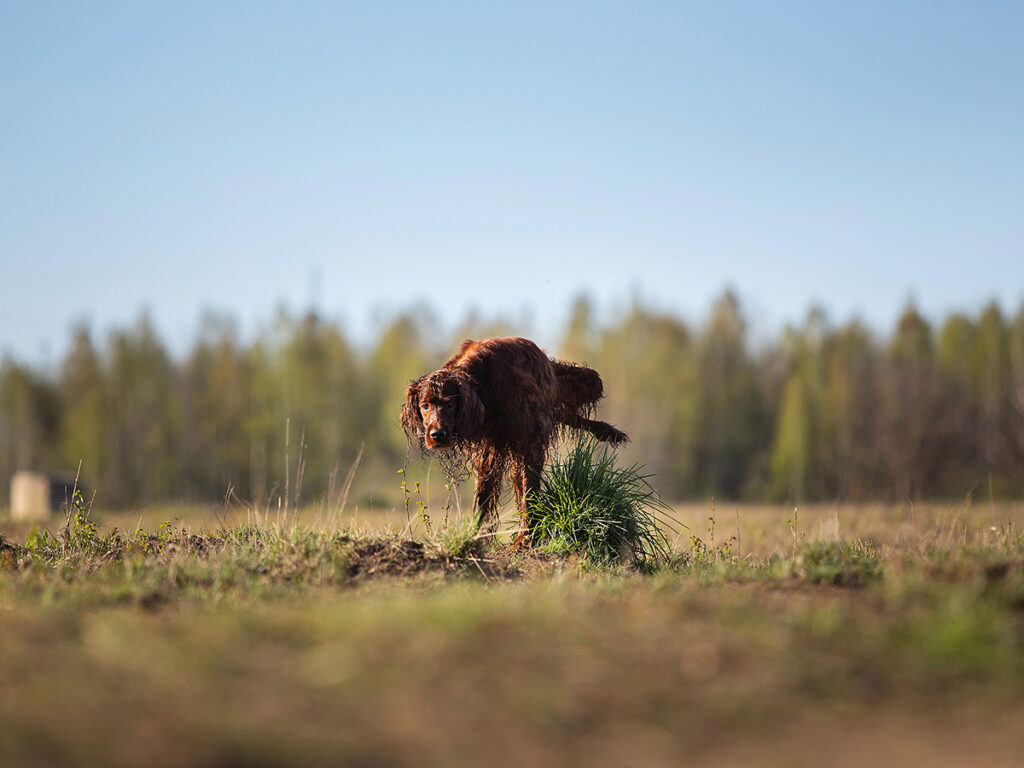

Your dog will very much enjoy urinating in the backyard, contributing to the decay of the lawn.
Nitrogen Presence
Dog’s urine contains nitrogen. The amounts of nitrogen that the dog passes are toxic to the soil. Also, nitrogen release and its contact with the lawn change its structure.
In addition to urine, feces also compromises the grass cycle. Feces also contains nitrogen, but it has a slower, less invasive contact with grass because it is solid.
But how can you know that your grass has already been damaged?
After a certain period, you will notice yellow spots appearing. They are a quick sign of the high nitrogen presence.
Now that you know how to detect it, let’s see what you can do to prevent further damage in the future.
Prevention & Fixing
It all comes down to your dog’s diet.
If your dog’s plate is full of protein, the presence of nitrogen in their urine will be higher. In consultation with the vet, determine the adequate amount of protein your dog should ingest.
Conversely, physical activity will be beneficial if your dog needs to meet his daily needs with a higher protein intake.
During physical activity, your dog’s metabolism increases. With an increase in metabolism, protein is put to better use, and the level of nitrogen in their urine decreases.
Bonus Tip #1: To prevent lawn deterioration caused by urine, identify areas where your dog can pee. If the dog is disciplined to execute this task properly, there will be no further problems.
Bonus Tip #2: Regularly clean your lawn of feces or urine. We also recommend watering the lawn at least once a week to prevent urine from dissolving in the soil. If you notice that the dog is relieving, water the lawn immediately.
Factor #3 – The Size of Your Dog
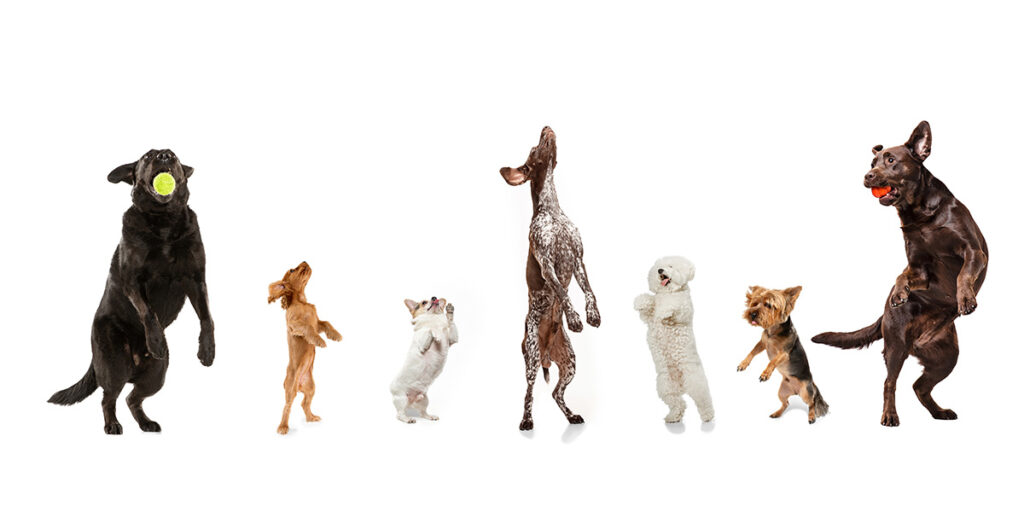

The two factors above combine into the final one, which is the size of your dog, which dictates the steps and pace you must follow to protect your lawn.
Large dogs are heavier and tend to be more physically active. Increased physical activity will require you to spend more time with your dog and increase grass-wearing.
Likewise, metabolism in larger dogs requires more food and water. This will mean that you will have to water the grass more often to prevent it from decaying.
If we have to put it in simple terms:
The bigger the dog, the bigger the worries!
The Best Grass for Dogs – Our Picks
Now, let’s look at the types of grass we have selected that will help you consider the best grass for dogs depending on your needs:
#5 – Centipede
- Highlighted Quality: Very Resistant to Urine
- Downside: High Watering Needs
This type of grass requires specific care, and it won’t grow in all climates. It is characterized by a strong texture that will withstand almost all the wear and tear your dog will put it through.
Centipede will not fit into alkaline soil, requiring more acidic soil than other types. It tolerates heat very well, so it will thrive during warmer days.
Keep in mind that this grass is exceptionally thirsty, so it will also require more frequent soaking to function normally.
Although it may sound strenuous, regular watering could be helpful as prevention against nitrogen damage. As we explained above, frequent watering will remove urine.
On the upside, it doesn’t require frequent mowing.
Maintain a height of about 1 / 1.5 inches during the summer (with half an inch tolerance depending on your preferences). Higher grass during the summer can prevent heat from emitting, which will make it a pleasant place for your dog.
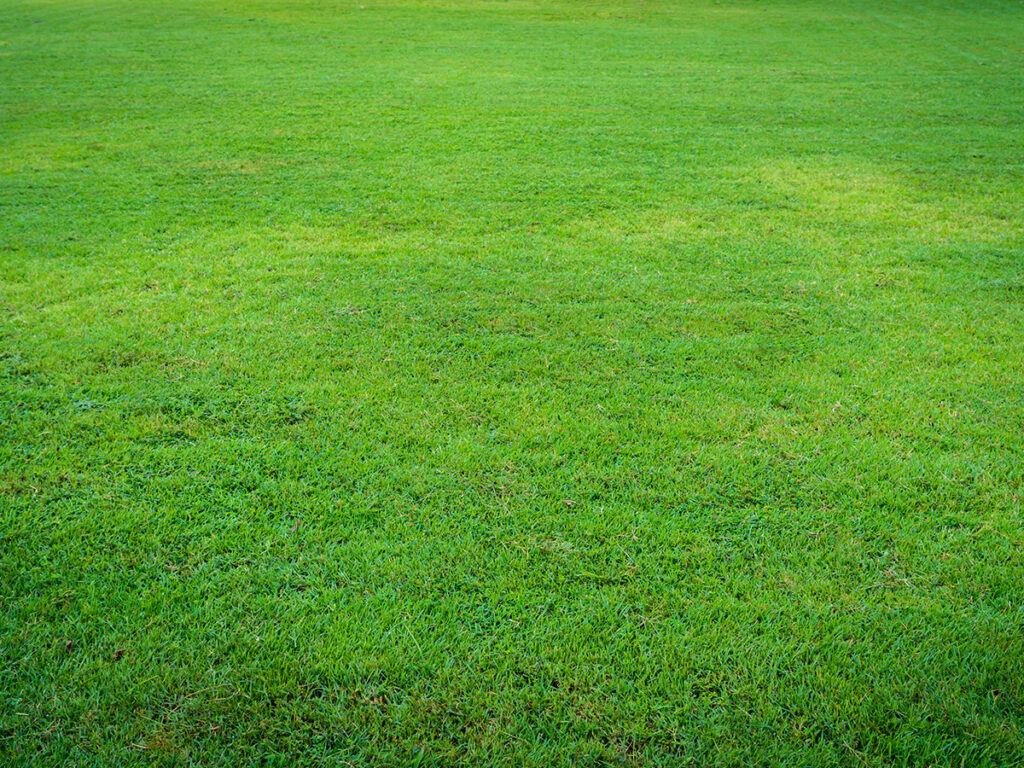

#4 – Zoysia
- Highlighted Quality: Dense & Easy to Maintain
- Downside: Grows Very Slowly
Zoysia is basically a synonym for dense grass. It is characterized by a fine texture of grass reminiscent of a green carpet.
It grows very slowly. From the moment you plant it, it will take up to 2 years to get its full density. You’ll need to mow at most three times a year, which can be a great choice if garden jobs don’t suit you.
During the summer, it shows a distinct green color. On the other hand, when the temperature drops, the color changes to yellow. For that reason, some people overseed to keep its green color throughout the year.
It is an excellent option during the summer period. Zoysia will thoroughly enjoy the sun. The great thing is that it is drought-resistant, so you won’t have to water constantly.
Zoysia is a great choice to allow your dog to relax on the thick green carpet like a true aristocrat!
#3 – Bermuda
- Highlighted Quality: Very Durable & Recovers Fast
- Downside: Not Suited for Cold Climates
If you have ever watched a golf match, you have most certainly noticed the beautiful green grass that stretches along the golf course.
In most cases, it is the Bermuda grass since it is an unavoidable choice for golf courts.
Also, you may find it in the nearby children’s park due to its durability.
Bermuda is characterized by elasticity and extreme density. It grows deep into the ground and is therefore extremely strong.
Think hard about the space you want to seed Bermuda. Once you plant it, it will become so firm that you will have to go through a lot of trouble to remove it if you change your mind.
From the moment you plant it, it will take up to 2 months for the lawn to look lush, which is quite a short time frame!
The cold climate doesn’t fit well, and its use in coastal areas is recommended. Also, Bermuda grass requires at least 6 hours of sunlight per day.
The recommended height for maintaining this grass is about 1 inch. During the summer, Bermuda will require more frequent mowing. However, during the winter, you will not have to mow the grass at all.
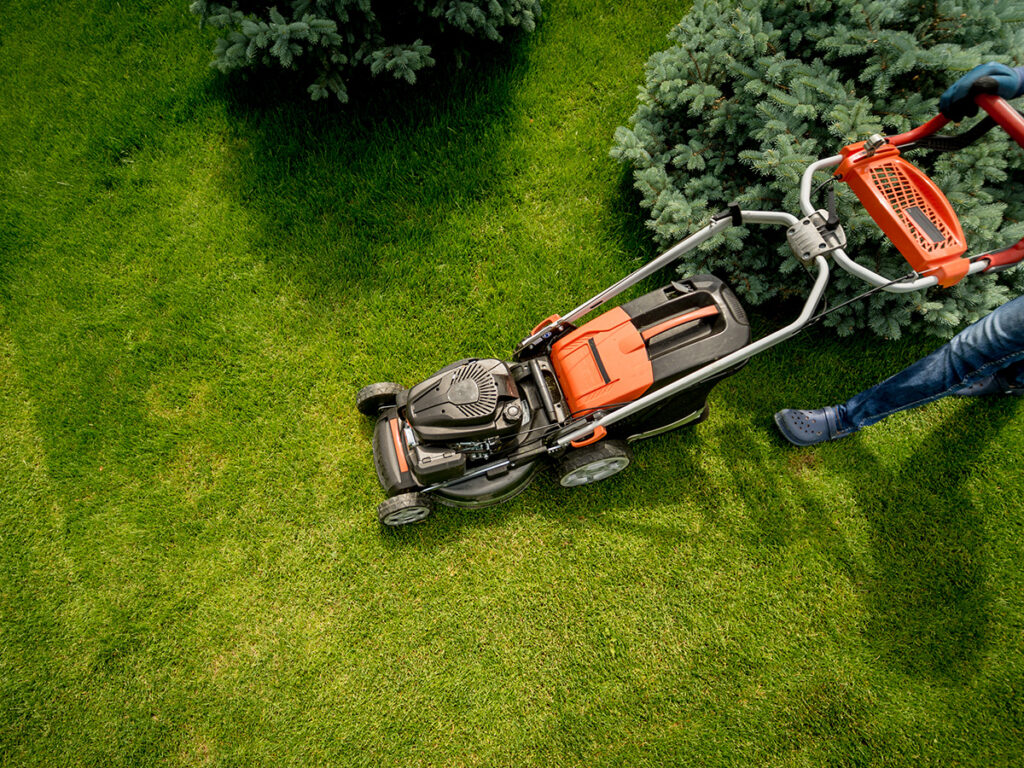

#2 – Fescue
- Highlighted Quality: Great for Large & Active Dogs
- Downside: Extra Care During Winter
The next item on our list of the best grass for dogs is the Fescue grass, also known as shade grass.
It doesn’t require much sun. Therefore, it will fit nicely in areas where both hot and cold weather prevail.
Due to its strength, it will perfectly fit the needs of every dog, especially if you own a large dog who loves to spend time in the garden.
It contains fungi, better known as endophytes. Endophytes live with this grass in symbiosis, enhancing its characteristics.
Since it is a winter grass, it will require more attention during cold days. There may be a need to overseed to maintain its density. Often, overseeding should occur during the summer, when brown spots could appear due to high temperatures.
It’s important to note that Fescue grass has exceptional moisture absorption power, which positively contributes to preventing damage to your lawn.
#1 – Kentucky Bluegrass
- Highlighted Quality: Best Grass for Dogs Overall
- Downside: Requires a Bit of Work
Finally, the best grass for dogs, in our opinion, is the king of green areas: The Kentucky Bluegrass.
It is the most popular type of grass that you can find on the market, and there are many reasons for that.
It thrives in all climatic conditions, particularly enjoying the cold climates. Additionally, it tolerates the drought period well.
The distinct bluish color will introduce a unique look to your backyard.
Most importantly, it will meet all the needs of your dog, especially when it comes to the constant running around.
It does take a long time to grow. Nevertheless, after a bit of waiting, this grass will delight you with its durability and remarkable recovery.
For all these reasons, the Kentucky bluegrass is an excellent choice for all dogs. It even gets bonus points if you have children in your household since it will be able to withstand everything.
It does require a lot of work to keep everything in check, though. However, it will all be well worth it in the end.
Conclusion
Each grass has different maintenance requirements and offers various benefits.
We hope that this post has shown you which grass can best suit you and your dog in the best possible way. Choose the right one, and your dog will be ready for new adventures.
Let’s hear your opinion:
Which of these types will be your choice?
We can’t wait to see your favorites in the comments below!
See you in the next post!
